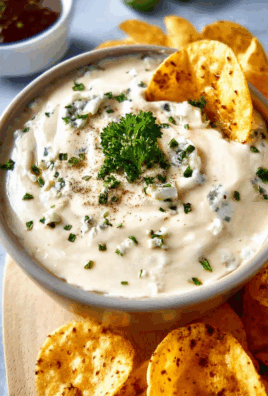Fried shallots, those crispy, golden slivers of deliciousness, are about to become your new culinary obsession. Forget everything you thought you knew about shallots; once youve tasted them transformed into these crunchy, savory gems, youll be sprinkling them on everything! Have you ever wondered how to elevate a simple dish from ordinary to extraordinary? The answer might just lie in these intensely flavorful morsels.
While the exact origins are debated, the art of frying shallots has deep roots in Southeast Asian cuisine, particularly in countries like Indonesia, Thailand, and Vietnam. For generations, they’ve been used not only as a flavor enhancer but also as a textural element, adding a delightful crunch to everything from stir-fries and salads to soups and rice dishes. They are more than just a garnish; they are a testament to the ingenuity of using simple ingredients to create complex and satisfying flavors.
What makes fried shallots so irresistible? It’s the perfect combination of sweet and savory, with a satisfyingly crisp texture that adds a delightful contrast to any dish. They offer a depth of flavor that raw shallots simply can’t match, mellowing out the sharpness and developing a rich, almost caramelized sweetness. Plus, they’re incredibly versatile and easy to make at home. So, are you ready to unlock the secret to adding a touch of magic to your cooking? Let’s get started!
Ingredients:
- 1 pound shallots, peeled
- Vegetable oil, for frying (about 3-4 cups, depending on your pot size)
- Pinch of salt
- Optional: 1 tablespoon cornstarch or rice flour (for extra crispiness)
Preparing the Shallots:
- Thinly slice the shallots. This is the most crucial step! You want them to be as uniform as possible so they cook evenly. I find a mandoline slicer works wonders for this, but a sharp knife and a steady hand will do the trick too. Aim for slices about 1/16 to 1/8 inch thick. Thicker slices will take longer to cook and may not get as crispy.
- Soak the sliced shallots in cold water. Place the sliced shallots in a large bowl and cover them with cold water. Let them soak for at least 30 minutes, or even up to an hour. This helps to remove some of the excess starch, which will prevent them from clumping together and promote even browning. Change the water a couple of times during the soaking process. You’ll notice the water becomes cloudy that’s the starch being released.
- Drain the shallots thoroughly. After soaking, drain the shallots in a colander. Then, spread them out on a clean kitchen towel or several layers of paper towels. Gently pat them dry to remove as much moisture as possible. The drier the shallots, the crispier they will be when fried. This step is really important, so don’t rush it! You can even let them air dry for a bit after patting them down.
- Optional: Toss with cornstarch or rice flour. If you want extra crispy shallots, toss the dried shallots with about 1 tablespoon of cornstarch or rice flour. This will create a light coating that helps them crisp up beautifully in the hot oil. Make sure to toss them gently so they are evenly coated. Don’t use too much, or they will become clumpy.
Frying the Shallots:
- Heat the oil. Pour the vegetable oil into a deep pot or Dutch oven. You want enough oil so the shallots can float freely. Heat the oil over medium heat. The ideal temperature is around 300-325°F (150-160°C). If you don’t have a thermometer, you can test the oil by dropping a single shallot slice into the oil. If it sizzles gently and rises to the surface, the oil is ready. If it browns too quickly, the oil is too hot. If it doesn’t sizzle, the oil is not hot enough.
- Fry the shallots in batches. Don’t overcrowd the pot! Fry the shallots in small batches to maintain the oil temperature and ensure even cooking. Overcrowding will lower the oil temperature, resulting in soggy shallots. Add a handful of shallots to the hot oil and spread them out as much as possible.
- Stir frequently. As the shallots fry, stir them frequently with a slotted spoon or spider. This will help them cook evenly and prevent them from sticking together.
- Monitor the color. The shallots will initially be pale and translucent. As they cook, they will gradually turn golden brown. Be careful not to let them get too dark, as they will continue to darken after they are removed from the oil. Aim for a light golden brown color. Remember, they will crisp up and darken further as they cool.
- Remove from the oil. Once the shallots are a light golden brown, use a slotted spoon or spider to remove them from the oil. Transfer them to a wire rack lined with paper towels to drain the excess oil. Spread them out in a single layer so they can cool and crisp up properly.
- Repeat with remaining shallots. Continue frying the shallots in batches until all of them are cooked. Make sure to let the oil temperature recover between batches.
- Season with salt. While the fried shallots are still warm, sprinkle them with a pinch of salt. This will enhance their flavor.
Cooling and Storing:
- Let the shallots cool completely. Allow the fried shallots to cool completely on the wire rack. This is crucial for achieving maximum crispiness. As they cool, they will become even more crunchy and flavorful.
- Store in an airtight container. Once the shallots are completely cool, transfer them to an airtight container. Store them at room temperature. Properly stored, fried shallots can last for several weeks, although they are best enjoyed within a few days for optimal crispness.
Tips for Perfect Fried Shallots:
- Use fresh shallots. Fresh shallots will have the best flavor and texture. Avoid using shallots that are soft or have sprouted.
- Slice uniformly. Consistent slicing is key to even cooking. A mandoline slicer is your best friend here.
- Don’t skip the soaking step. Soaking removes excess starch and prevents clumping.
- Dry thoroughly. Moisture is the enemy of crispiness. Make sure the shallots are completely dry before frying.
- Use the right oil temperature. Too hot, and they’ll burn. Too cold, and they’ll be soggy.
- Fry in batches. Overcrowding the pot will lower the oil temperature and result in uneven cooking.
- Don’t overcook. They will continue to darken after they are removed from the oil.
- Cool completely. This is essential for achieving maximum crispiness.
- Store properly. An airtight container will keep them fresh and crispy.
Troubleshooting:
- Shallots are burning: The oil is too hot. Reduce the heat and let the oil cool down slightly before continuing.
- Shallots are soggy: The oil is not hot enough, or the pot is overcrowded. Increase the heat and fry in smaller batches. Make sure the shallots are completely dry before frying.
- Shallots are clumping together: The shallots were not soaked long enough, or they were not dried thoroughly. Make sure to soak them for at least 30 minutes and dry them completely before frying.
- Shallots are not crispy: They were not cooled completely, or they were not stored properly. Allow them to cool completely on a wire rack and store them in an airtight container.
Serving Suggestions:
Fried shallots are a versatile condiment that can be used to add flavor and texture to a wide variety of dishes. Here are a few serving suggestions:
- As a topping for Asian dishes: Fried shallots are a classic topping for many Asian dishes, such as noodles, rice, soups, and stir-fries. They add a delicious crunch and savory flavor.
- In salads: Sprinkle fried shallots over salads for added texture and flavor. They pair well with both green salads and grain salads.
- On sandwiches and burgers: Add fried shallots to sandwiches and burgers for a crispy and flavorful topping.
- As a garnish for soups and stews: Garnish soups and stews with fried shallots for added flavor and visual appeal.
- As a snack: Enjoy fried shallots as a snack on their own. They are surprisingly addictive!
I hope you enjoy making these crispy and delicious fried shallots! They are a simple yet flavorful addition to any meal.

Conclusion:
So there you have it! This recipe for perfectly crispy fried shallots is more than just a topping; it’s a flavor explosion waiting to happen. I truly believe that once you try making these at home, you’ll never go back to the store-bought variety. The depth of flavor and satisfying crunch are simply unmatched. It’s a game-changer, I promise!
Why is this a must-try? Well, beyond the incredible taste, it’s surprisingly simple to make. With just a few ingredients and a little patience, you can transform humble shallots into golden-brown, irresistible morsels. They add a touch of elegance and a burst of savory goodness to almost any dish. Think of it as your secret weapon in the kitchen, ready to elevate your cooking from ordinary to extraordinary. Plus, making them yourself allows you to control the quality of the oil and ensure they are perfectly seasoned to your liking. No more bland, oily, or overly salty fried shallots!
Now, let’s talk about serving suggestions. The possibilities are truly endless! Of course, they’re fantastic sprinkled over Asian-inspired dishes like stir-fries, noodle soups (think ramen or pho), and rice bowls. But don’t stop there! Try them as a topping for salads, adding a delightful crunch and savory note. They’re also amazing on mashed potatoes, roasted vegetables, or even avocado toast. Seriously, just try it! For a truly decadent treat, sprinkle them over creamy soups like butternut squash or potato leek. The contrast of textures and flavors is simply divine.
And speaking of variations, feel free to experiment! Want a little heat? Add a pinch of red pepper flakes to the oil while frying. Craving something sweeter? A touch of brown sugar can create a caramelized effect. You can also infuse the oil with garlic or ginger for an extra layer of flavor. Get creative and make them your own!
I’m so excited for you to try this recipe. I know you’ll love the results. The key is to keep a close eye on the shallots while they’re frying and remove them from the oil just before they reach your desired color, as they will continue to darken as they cool. Don’t overcrowd the pan, and be sure to stir them frequently to ensure even cooking.
Don’t be intimidated!
This recipe is very forgiving. Even if your first batch isn’t perfect, you’ll learn from the experience and get better with each try. The most important thing is to have fun and enjoy the process.
So, what are you waiting for? Head to your kitchen, grab some shallots, and get frying! I can’t wait to hear about your experience. Please, please, please share your photos and comments with me. Let me know how you used your fried shallots and what variations you tried. Did you add them to your favorite soup? Did you sprinkle them on a salad? Did you create a completely new and innovative dish? I’m all ears! Your feedback is invaluable, and it helps me to create even better recipes in the future.
Share Your Creations!
Tag me in your photos on social media and use the hashtag #HomemadeFriedShallots so I can see your culinary masterpieces. I’m so excited to see what you come up with! Happy cooking! And remember, the best meals are made with love and a little bit of crispy, golden-brown goodness.
Fried Shallots: The Ultimate Guide to Crispy Perfection
Crispy, golden-brown fried shallots, perfect as a topping for Asian dishes, salads, soups, and more. Easy to make at home!
Ingredients
- 1 pound shallots, peeled
- Vegetable oil, for frying (about 3-4 cups, depending on your pot size)
- Pinch of salt
- Optional: 1 tablespoon cornstarch or rice flour (for extra crispiness)
Instructions
- Thinly slice the shallots: Aim for slices about 1/16 to 1/8 inch thick. A mandoline slicer works best, but a sharp knife will do.
- Soak the sliced shallots in cold water: Place the sliced shallots in a large bowl and cover them with cold water. Let them soak for at least 30 minutes, or even up to an hour. Change the water a couple of times during the soaking process.
- Drain the shallots thoroughly: After soaking, drain the shallots in a colander. Then, spread them out on a clean kitchen towel or several layers of paper towels. Gently pat them dry to remove as much moisture as possible.
- Optional: Toss with cornstarch or rice flour: If you want extra crispy shallots, toss the dried shallots with about 1 tablespoon of cornstarch or rice flour. Toss gently so they are evenly coated.
- Heat the oil: Pour the vegetable oil into a deep pot or Dutch oven. Heat the oil over medium heat to around 300-325°F (150-160°C). Test the oil by dropping a single shallot slice into the oil. If it sizzles gently and rises to the surface, the oil is ready.
- Fry the shallots in batches: Fry the shallots in small batches to maintain the oil temperature and ensure even cooking. Add a handful of shallots to the hot oil and spread them out as much as possible.
- Stir frequently: As the shallots fry, stir them frequently with a slotted spoon or spider.
- Monitor the color: Aim for a light golden brown color. Remember, they will crisp up and darken further as they cool.
- Remove from the oil: Once the shallots are a light golden brown, use a slotted spoon or spider to remove them from the oil. Transfer them to a wire rack lined with paper towels to drain the excess oil. Spread them out in a single layer so they can cool and crisp up properly.
- Repeat with remaining shallots: Continue frying the shallots in batches until all of them are cooked. Make sure to let the oil temperature recover between batches.
- Season with salt: While the fried shallots are still warm, sprinkle them with a pinch of salt.
- Let the shallots cool completely: Allow the fried shallots to cool completely on the wire rack.
- Store in an airtight container: Once the shallots are completely cool, transfer them to an airtight container. Store them at room temperature.
Notes
- Use fresh shallots for the best flavor and texture.
- Consistent slicing is key to even cooking.
- Don’t skip the soaking step to remove excess starch.
- Moisture is the enemy of crispiness; dry the shallots thoroughly.
- Maintain the right oil temperature for even cooking.
- Fry in batches to avoid overcrowding the pot.
- Don’t overcook the shallots, as they will continue to darken after removal from the oil.
- Cool completely for maximum crispiness.
- Store properly in an airtight container to keep them fresh and crispy.




